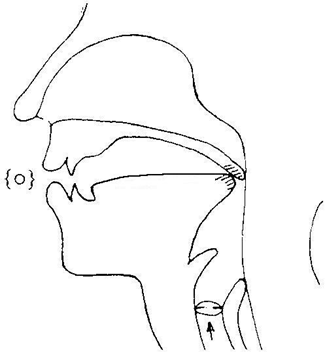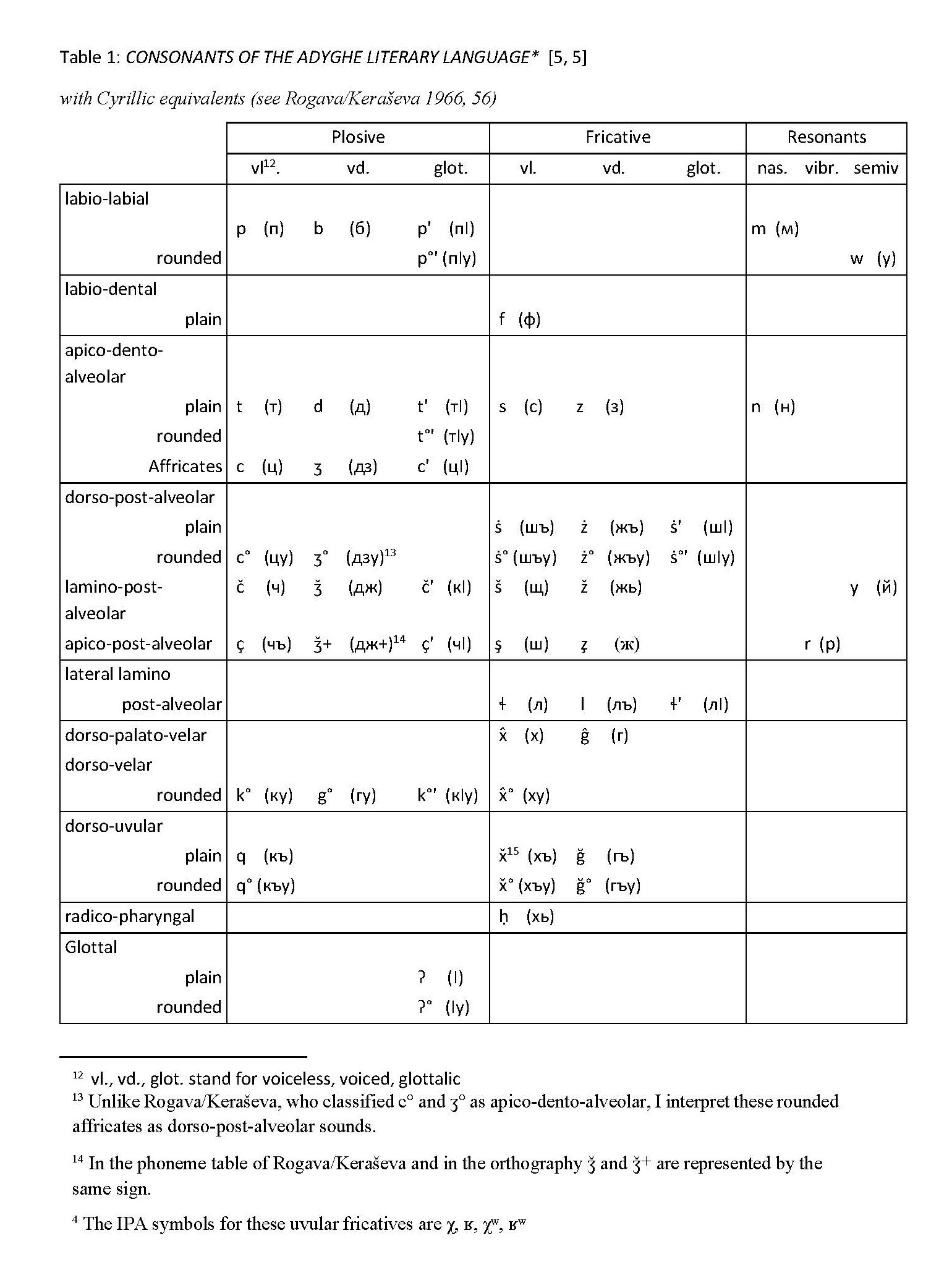Hoehlig Monika, Prof. Dr.[1]
Learning the Adyghe language presents a special challenge for non-native speakers. Adyghe is distinguished by having an especially large number of phonemes, mainly due to the consonant system. For the Adyghe literary language, Rogava and Kerasheva [1, 56] distinguish 55 consonant phonemes. The multitude of consonants in Adyghe results from the opposition between voiced, voiceless and glottalic and between labialized and non-labialized manners of articulation. For people who come from different language backgrounds many of these sounds are very difficult to produce.
From my own experience I find visual materials, such as illustrations for the pronunciation of sounds very helpful for learning a foreign language. By this I mean diagrams of the human speech tract which show the places and manners of articulation of the various sounds. This way the formation and production of sounds can be better understood.
In order to help Russian speakers to learn the pronunciation of Adyghe sounds I published in 2003 a tutorial guide called “Фонетическое описание звуков литературного адыгейского языка“,[2: 3] in which I presented phonetic diagrams of Adyghe sounds as visual learning aid.

Notes of Prof. John Catford which he prepared during his stay in Israel among the local Adyghe people in 1972 formed the basis of this book [3]. In addition to this, some material was used from the textbook “Handbuch zur Sprachmethodik: Einführung in die praktische artikulatorische Phonetik” (‘Handbook of language methodology: Introduction to Practical Articulatory Phonetics’ (1994), published by the German branch of SIL International [4].
From the contents of the tutorial guide published in 2003 an audio recording has been made so that the Adyghe sounds can also be heard with corresponding examples.
In March 2019, I also published an English version of this teaching guide: “Phonetic Description of Consonants and Vowels of the Adyghe Literary Language” [5].
The phonetic notation of Adyghe phonemes in the English version follows the conventions in Caucasiology published in “Indigenous Languages of the Caucasus Vol. 2, The North West Caucasian Languages”, edited by George Hewitt [6]. In the description of Adyghe sounds the Cyrillic orthographic symbols for Adyghe are added after the phonetic symbols.

Table 2ː Phonetic diagram of Glottal Stops: [ʔ], [ʔ°] ‘І, Іу’ [5,13]
Total closure of the glottis followed by sudden opening.
 |
| 1. glottal stop [ʔ] ‘ І ‘
2. labialized glottal stop [ʔ°] ‘ Іу ‘ |
Examples
(simplified notation)
Іэ ʔe “arm”
чъыІэ çıʔe “cold”
сиІ siʔ “I have”
(Note the Adyghe orthography rules: Іу + ы = Іу; Іу + э = Іо)
Іудан ʔ°ıdan “thread”
едэІугъ yedeʔ°ığ “listened”
чыІу çıʔ°ı “button”
Іофы ʔ°efı “work”
дэІон deʔ°en “to listen”
даІо! daʔ°e “listen!”
The book can be used as part of a curriculum for teaching the Adyghe language together with other textbooks, or may be used independently as a self-study guide.
Nowadays we have the advantage of also having digital means to learn languages. My SIL colleague Rainer Feer has started developing an App for smartphones based on the model of the book. The App represents the phonetic diagrams of the Adyghe sounds with the corresponding audio examples.
Literature
- Rogava, G.V., Keraševa, Z.I.: Grammatika adygejskogo jazyka, Krasnodar 1966.
- Hoehlig, М.: Fonetičeskoe opisanie zvukov literaturnogo adygejskogo jazyka, Maykop, 2003.
- Catford, J.C.: Phonetical Notes on Adyghe. Photocopy of notes taken in Israel in 1972.
- Dreiheller, C: Einführung in die praktische artikulatorische Phonetik. Seminar für Sprachmethodik, Burbach, 1994.
- Hoehlig, М.: Phonetic Description of Consonants and Vowels of the Adyghe Literary Language, Maykop 2019.
- Hewitt, G. editor: Indigenous Languages of the Caucasus Vol. 2, The North West Caucasian Languages, 1989.
[1] Member of SIL International Berlin
* Source: Höhlig, Monika: Kontaktbedingter Sprachwandel in der adygeischen Umgangssprache im Kaukasus und in der Türkei, Lincom Studies in Caucasian Linguistics 03, Lincom Europa, München 1997.

